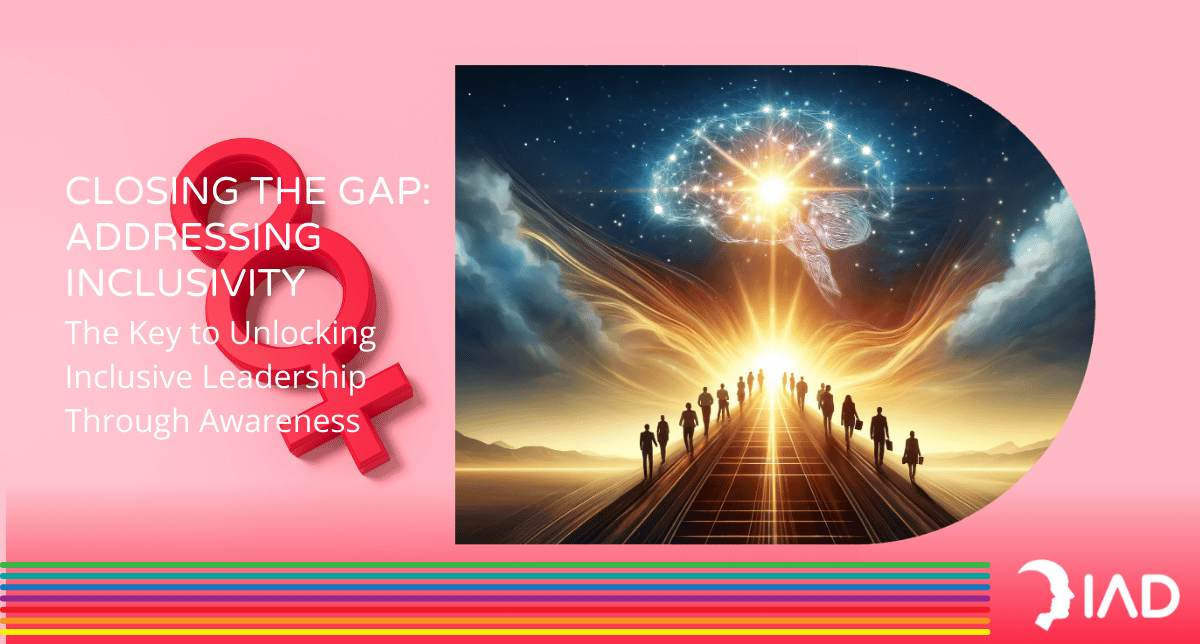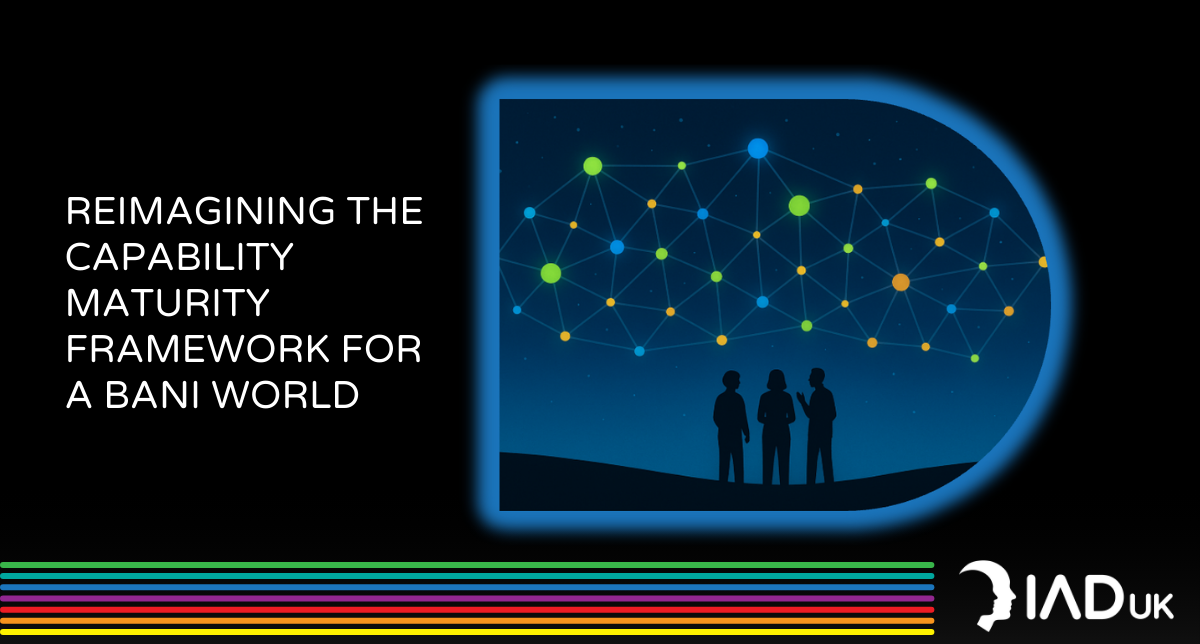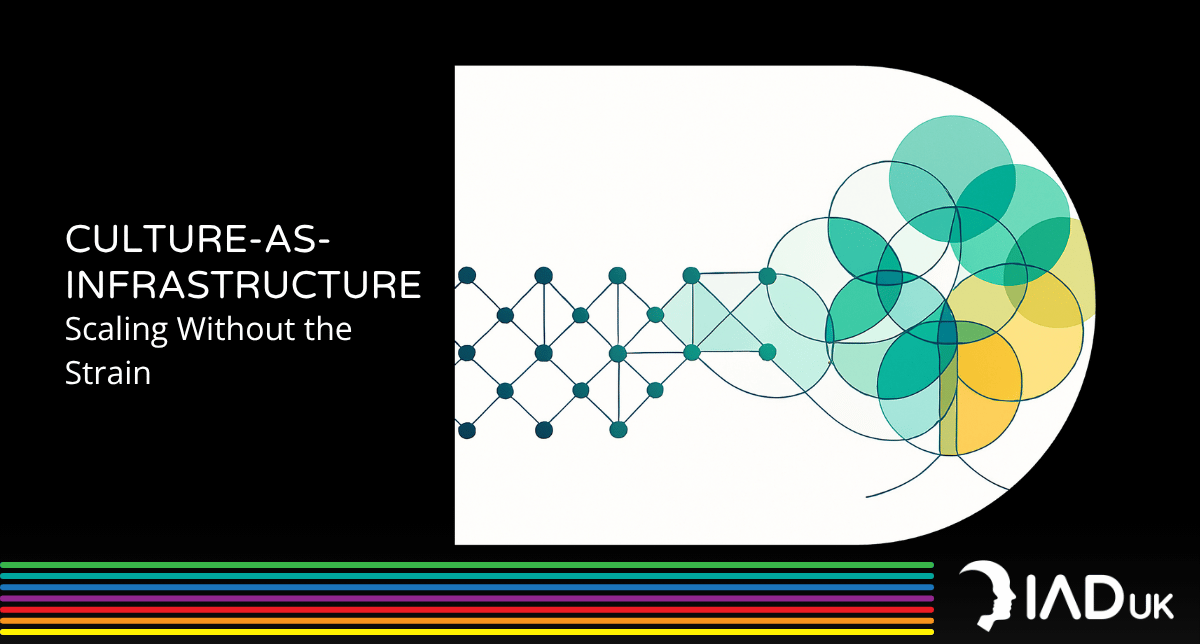Closing the Gap: Addressing Inclusivity
The Key to Unlocking Inclusive Leadership Through Awareness

Despite years of investment in leadership diversity programs, the gender gap in senior leadership remains entrenched. Traditional approaches—bias training, mentorship schemes, and quota-driven initiatives—often fail to create meaningful change. Why? Because leadership is not just about opportunity; it is about how leaders construct their thinking.
Leadership decisions are not made in a vacuum; they are shaped by deeply ingrained Cognitive Intentions—habitual thinking patterns that guide how leaders perceive talent, potential, and inclusion. Without awareness of these automatic constructs, even well-intentioned leaders may reinforce exclusionary norms.
This is where Dynamic Intelligence (DI) transforms the equation. The Dynamic Intelligence Development System™ (DIDS™) does not focus on changing external behaviours; it works at the cognitive level, helping leaders recognise and reconstruct the biases embedded in their decision-making.
The shift is profound: Instead of training women to “fit in”1 to existing leadership paradigms , DIDS reshapes leadership itself—building leaders who actively create more inclusive, high-performance cultures.
✅ Key Takeaway: Leadership diversity is not about fixing people; it is about transforming how leadership is constructed.
Why Leadership Requires Cognitive Awareness
Leadership training has long been competency-driven—emphasising skills like communication, strategic thinking, and decision-making. But if skills alone were enough, the leadership gap would already be closed. The reality? Performance is not just about what leaders know, but how they think.
Cognitive Intentions—the habitual patterns that shape a leader’s thinking—operate beneath conscious awareness. These patterns dictate how leaders assess talent, distribute opportunities, and respond to challenges. Without the ability to recognise and disrupt these automatic constructs, even well-trained leaders default to bias-laden decisions, subtly steering women into career-derailing roles while rewarding men who navigate the same challenges without concession.2
Research underscores the impact of awareness on leadership effectiveness. Leaders with greater self-awareness make better decisions, foster more inclusive teams, and drive higher organisational performance. Yet, many organisations misdiagnose the issue—assuming that women’s slow career progression stems from personal choices rather than deeply embedded cognitive biases in leadership culture .
The missing link is Dynamic Intelligence (DI). Studies show that diverse teams only outperform homogenous ones when leaders foster inclusion3 . But inclusion is not a skill—it is a cognitive capability. Without the ability to see and challenge their own Cognitive Intentions, leaders risk making surface-level changes that fail to drive real progress.
By integrating Dynamic Intelligence Development™ (DIDS)™ into leadership training, organisations move beyond competency-building to cognitive transformation—equipping leaders with the awareness and flexibility to construct leadership differently.
✅ Key Takeaway:
Without cognitive awareness, even the most skilled leaders reinforce bias.
From Habitual Thinking to Intentional Leadership
Most leadership programs focus on modifying external behaviours, but this approach overlooks the root cause of leadership bias. Leaders don’t just act—they think in habitual ways that shape how they assess potential, allocate opportunities, and define leadership itself.
The Dynamic Intelligence Development System™ (DIDS™) addresses this challenge by moving beyond surface-level interventions. Instead of teaching inclusive behaviours, it develops the cognitive awareness needed to make inclusion an inherent part of leadership thinking.
How DIDS™ Works:
🔹 Identifies Habitual Thinking Patterns
Leaders often default to familiar perspectives, unconsciously favouring individuals who align with their existing mental models. DIDS™ makes these patterns visible, enabling leaders to recognise where their biases shape decision-making.
🔹 Expands Cognitive Flexibility
Leaders with low Dynamic Intelligence struggle to adapt their perspectives, making it difficult to value diverse contributions. DIDS™ enhances cognitive flexibility, allowing leaders to move beyond ingrained assumptions and engage with multiple viewpoints.
🔹 Builds Intentional Decision-Making
Without awareness, leadership decisions are often automatic, shaped by ingrained Cognitive Intentions rather than deliberate evaluation. DIDS™ develops leaders' awareness of their own Cognitive Intentions, helping them recognise where habitual patterns influence decision-making. Instead of operating on autopilot, leaders gain the ability to identify, challenge, and reconstruct their thinking in real-time—ensuring that their decisions about hiring, promotion, and talent development are intentional rather than reflexive.
Without awareness, leadership decisions are often automatic, shaped by ingrained Cognitive Intentions rather than deliberate evaluation. DIDS™ develops leaders' awareness of their own Cognitive Intentions, helping them recognise where habitual patterns influence decision-making. Instead of operating on autopilot, leaders gain the ability to identify, challenge, and reconstruct their thinking in real-time—ensuring that their decisions about hiring, promotion, and talent development are intentional rather than reflexive.
The Impact of Higher Dynamic Intelligence
When leaders develop greater cognitive awareness, their ability to make fairer, more intentional decisions increases. Research shows that leaders who recognise and adjust their biases are far more effective in building inclusive, high-performing teams.4
By developing Dynamic Intelligence, leaders gain the tools to reshape leadership culture at its core. They move beyond compliance-driven diversity efforts to actively constructing workplaces where diverse talent thrives—not as an exception, but as the norm.
✅ Key Takeaway:
Bias thrives in automatic thinking. DIDS™ equips leaders with the awareness and flexibility to disrupt these patterns and build stronger, more inclusive teams.
From Awareness to Action: Three Steps to Transform Leadership Culture
Developing awareness of cognitive biases is not a passive process—it requires intentional action. Leadership decisions are shaped by Cognitive Intentions, and without deliberate intervention, these patterns continue to reinforce exclusionary norms.
Organisations committed to closing the leadership gap can take three key steps to integrate Dynamic Intelligence principles into decision-making and leadership development.
1. Audit Leadership Decisions for Cognitive Bias
Even well-intentioned leaders unconsciously favour familiar thinking patterns when assessing talent. This leads to hiring, promotion, and succession decisions that reinforce homogeneity. Structured audits can help surface these patterns and reveal where bias is shaping leadership pipelines.
✅ Actionable Insight:
- Implement blind review processes for leadership selection to reduce subjective bias.
- Encourage senior leaders to review past promotion data and identify recurring trends in candidate selection.
2. Use Awareness-Based Coaching to Challenge Thinking Patterns
Coaching is a powerful tool for leadership development, but traditional coaching focuses on behaviour rather than cognition. DIDS-based Next Level Coaching™ shifts the focus to awareness of cognitive patterns, helping leaders identify and reshape their habitual ways of thinking in real time.5
✅ Actionable Insight:
- Integrate awareness-focused reflection sessions into leadership coaching.
- Use real-world case studies to challenge leaders' assumptions about talent and leadership potential.
3. Embed Dynamic Intelligence into Leadership Development
Most leadership programs focus on skill-building, but without awareness, leaders apply these skills through existing biases. Integrating Dynamic Intelligence training ensures that leaders don’t just acquire competencies—they develop the cognitive flexibility to use them without reinforcing exclusionary patterns.
✅ Actionable Insight:
- Introduce cognitive flexibility exercises into leadership training programs.
- Encourage leaders to track their decision-making processes to identify recurring Cognitive Intentions.
By embedding awareness-driven development into leadership strategy, organisations can create leadership pipelines where talent is recognised beyond traditional biases—resulting in more inclusive, high-performing teams.
✅ Key Takeaway:
Awareness isn’t passive—it requires action. Leaders who actively challenge their thinking create the conditions for inclusive leadership to thrive.
The Future of Leadership: Awareness as the Driver of Systemic Change
Leadership is evolving. In an era of increasing complexity and uncertainty, the leaders who succeed won’t simply be those with the best skills—they will be those with the highest cognitive awareness. The ability to recognise bias, challenge deeply embedded assumptions, and construct more intentional decisions will define the next generation of inclusive leadership.
For organisations, this requires a shift away from surface-level diversity initiatives and toward deep, cognitive-level development. The traditional approach—training individuals to adapt to existing leadership norms—is fundamentally flawed. True progress happens when leaders transform the way leadership itself is constructed.
This is the promise of Dynamic Intelligence (DI). As organisations embrace awareness-driven leadership, diversity gaps will close—not through forced compliance, but because leaders will see talent more clearly, recognise potential more equitably, and foster cultures where diverse perspectives drive performance.
From Reactive to Proactive Leadership
Traditional leadership frameworks react to systemic inequities—patching over biases with policy changes and diversity training. But bias is not a procedural issue; it is a cognitive one. Without intentional cognitive development, leaders will continue to make automatic decisions that reinforce exclusionary norms.
The future belongs to leaders who can actively construct their own thinking—those who can step beyond habitual Cognitive Intentions and reshape the way leadership is defined and developed.
✅ Key Takeaway: The next generation of leadership will not be defined by skills alone, but by the awareness to challenge bias and construct a more inclusive future.
Take the Next Step
Closing the leadership gap isn’t about ticking diversity boxes—it’s about developing leaders who can think beyond bias. When leaders cultivate Dynamic Intelligence, they don’t just make better decisions; they construct cultures where inclusion, performance, and innovation thrive together.
Now is the time to take action.
The future of leadership belongs to those who develop the awareness to see beyond bias, think with intention, and lead with purpose.
Let’s build it together.
Schedule a call to explore how DIDS can transform leadership development in your organisation
Alternatively, why not download our comprehensive brochure




